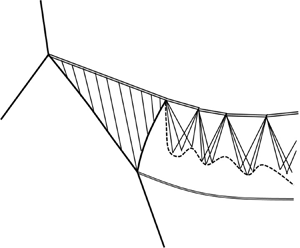Article contents
Type IV shock interaction with a two-branch structured transonic jet
Published online by Cambridge University Press: 06 May 2022
Abstract

Type IV shock interference has two triple points which produce two sliplines, forming a narrow jet that penetrates into the subsonic flow region behind the bow shock. Type IV shock interference in the case that the jet is supersonic has been extensively studied in the past. In this paper, type IV shock interference where the jet is transonic is studied. The transition condition from a supersonic to a transonic jet is identified and the influence of compression Mach waves, created inside the leading portion of the jet due to the pressure gradient outside the jet, on the transition and jet shape is analysed. It is found that these compression waves advance the transition from a supersonic to a transonic jet and make the flow inside the transonic jet have a two-branch structure: the lower branch is subsonic, the upper branch is supersonic and is composed of a combination of compressive and expansive waves. The mechanism by which the two-branch structure is produced is explained.
JFM classification
- Type
- JFM Papers
- Information
- Copyright
- © The Author(s), 2022. Published by Cambridge University Press
References
REFERENCES
- 3
- Cited by





